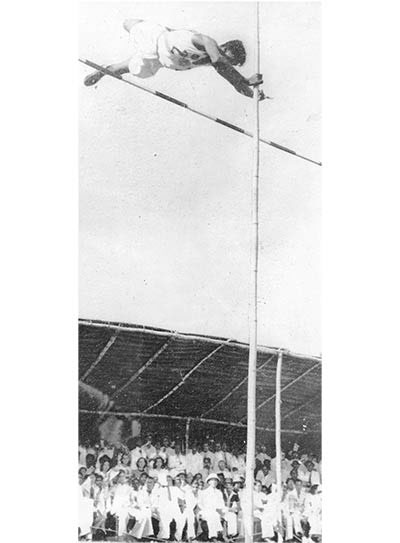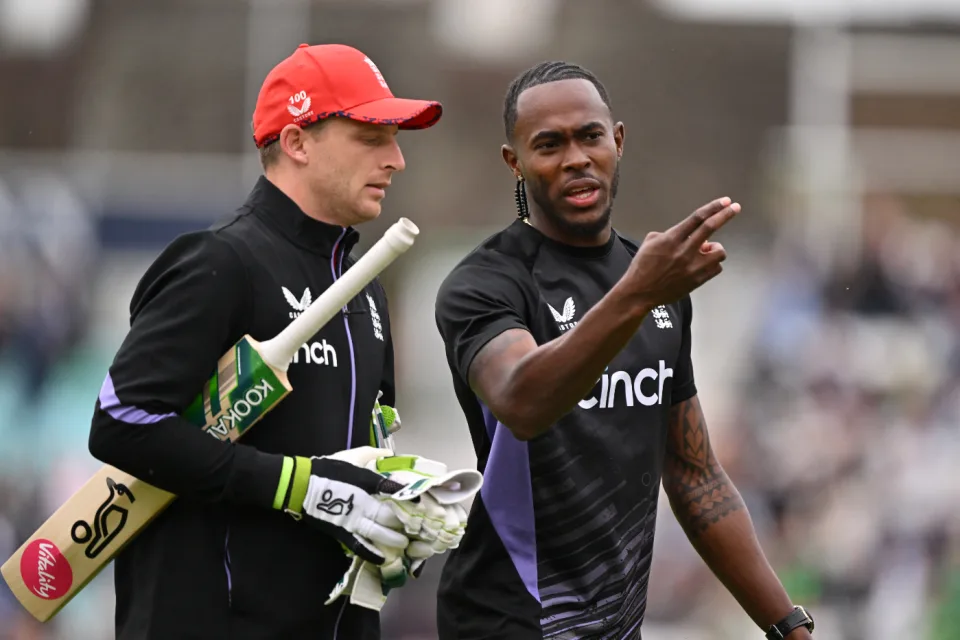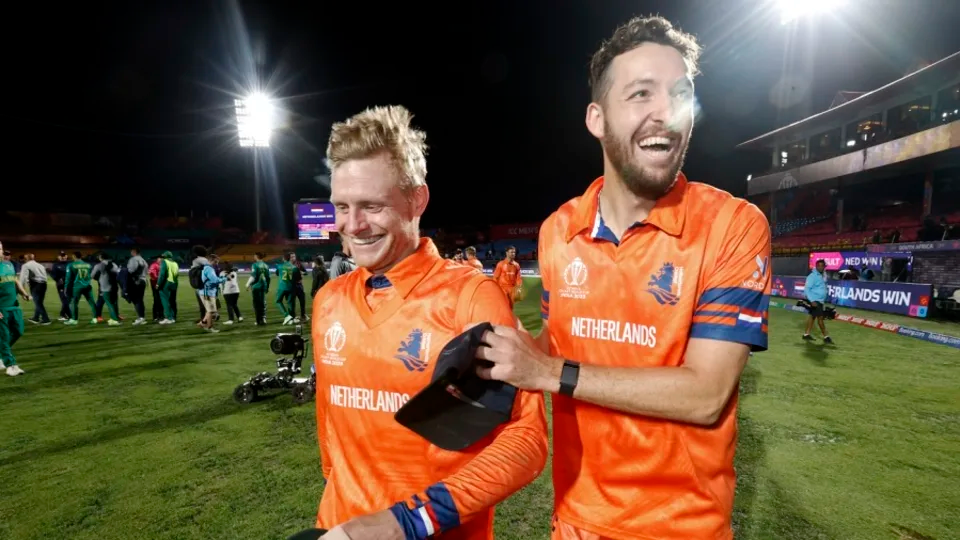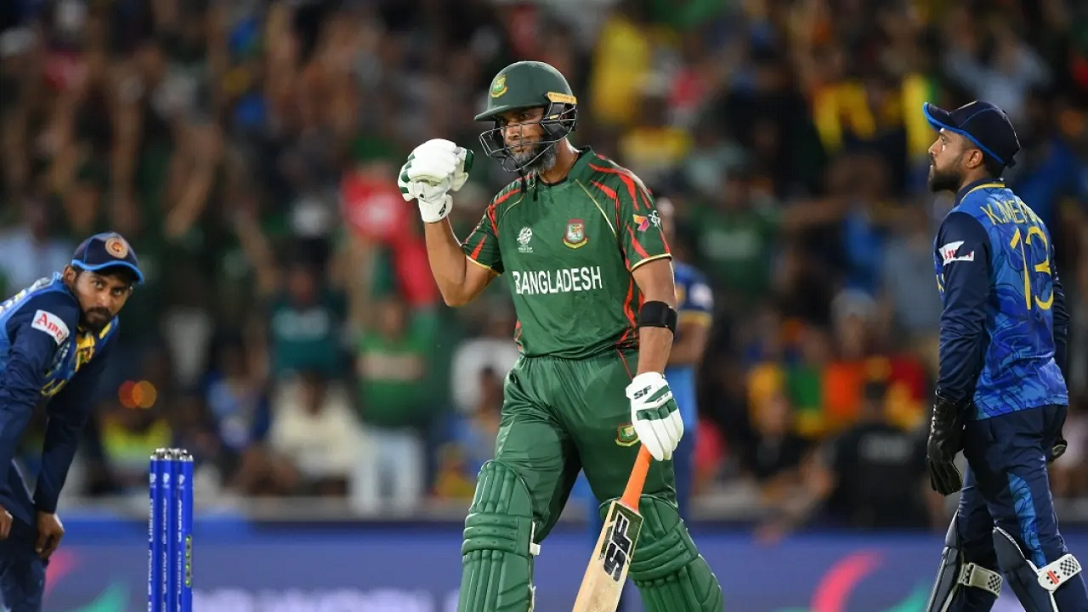Sports
Dep’s heroics at pole vault

Barrier Breakers
Throughout the course of human history man has been striving to break barriers which most people could not surmount eg: the four-minute mile and the sub ten second hundred metres. In Sri Lanka one such person who was to overcome several barriers, literally as well as metaphorically in the pole vault event was none other than Arthur Cletus Dep.
A.C. Dep was born on the 5th March 1917. His father was a teacher at St. Joseph’s College Colombo. Dep studied at St. Joseph’s during Rev. Fr. Le Goc’s era. While at St. Joseph’s he was over awed when G.S. Sivapragasam soared over the bar in the pole vault event at the school’s Inter House Meet. At school Dep came under the watchful eyes of Marcus Perera the college athletics master, who guided and nurtured him throughout his school career to rise to great heights. On a subsequent occasion when M.M. Thowfeek, the Ceylon Observer Sports Editor had asked Dep what fascinated him about the pole vault. He had replied that Marcus Perera’s going over the bar in the pole vault fascinated him.
His first attempt in the field of athletics was at the dual meet between the Wattala Bolton Wanderers (Mabole section) and the Scarlet Runners (Averiwatta section). He represented St. Joseph’s at the Ceylon Public Schools Championship in 1933 in which year he came second to his schoolmate Malcolm Spittle. Two years later he not only broke the Public Schools record but also broke the 10-foot barrier in the pole vault and raised it to 10 ft 2 inch. He beat the Public Schools record holder R. Peiris to third place. Malcolm Spittle also beat R. Peiris and came second. At the National Championships in 1936 he represented the University College and cleared the 11foot barrier the first to clear this height-the second barrier. The Ceylon record at that time was 10ft 10ins by L. A. Leembruggen who at this meet finished equal to L.D. Smith of the University. W.W.Thambimutthu came second.
In 1937 National Championships Dep was beaten into second place by Leembruggen. Both cleared 10ft 6 3/4ins but Leembruggen was placed first with fewer failures. But ten days later he cleared the 12foot barrier clearing 12 ft ½ an ins–the third barrier to add yet another Ceylon record to his credit. The next year representing the University, he won the National title again clearing 11ft 9 1/4ins beating R. Peiris and L.A. Leembruggen to second and third paces respectively. At the Quadrangular meet he won the event with a jump of 12ft. In1939 at the University Dep cleared 12ft71/2inc a new Ceylon record. In1940 he broke the third barrier by vaulting 12 ft 35/8 ins. at the National Championships. Dep improved the Pole Vault record to 12ft7 ½ ins in1937. It stood for 23 long years.
At the Trials for the Asian games in 1962, Dep was officiating in another event. No sooner he heard over the public address system that Vijitha Wijeyesekara had broken his record, unlike modern day athletes, the real sportsman he was, came to the pole-vaulting area and congratulated Vijitha. I was lucky to witness this event. Dep could have objected because when he was jumping there were no takeoff boxes nor saw dust pits or landing mattresses. Dep represented Ceylon at International Meets on three occasions. In 1938 he represented Ceylon at the Empire Games held in Sydney. He was unplaced and cleared only11ft6 ½ ins.
While on the way back home from Sydney Dep cleared 12ft 4ins at a Perth Meet. That was the best height cleared by a Ceylonese away from Ceylon. In 1940 when the First Indo Ceylon Dual Contest was held in Colombo. Dep won the pole vault event. V. Stanely de Livera won the sprint double, H.A. Perera won the high jump while Duncan White won the 400m and the 400m hurdles. The Second Indo-Ceylon contest was held in 1946 in Bangalore, India. Dep captained the Ceylon team. Dep won his pole vault event, while H.M.P. Perera won the 400m and Duncan White won the 400m hurdles. On both occasions the Ceylon teams won the two relays 4x100m and the 4x400m. He participated at the National Championships from 1936 till 1953, 17 long years except during 1941 due to an attack of typhoid, 1947 Election duty and in 1950 being in England. In 1953 he twisted his ankle and bade goodbye to competitive athletics. Arthur Dep entered the University College and obtained a B.A degree from the University of London. When he decided to join the Ceylon Police he entered to the rank of Assistant Superintendent of Police and rose to the position of Senior Deputy Inspector General of Police. His interest in History and Social Anthropology was shown in becoming a member of the Sri Lanka branch of the Royal Asiatic Society. His well researched monograph earned him recognition from the Egyptian Government and he was invited to be present at the Orabi Pasha Commemoration. In his historical research the monumental work in compiling the History of the Ceylon Police standout as of permanent value. He continued his interest in athletics officiating at major athletic events and was a Vice President of the Ceylon AAA. He was its representative at the Sri Lanka National Olympic Committee. Despite his busy schedule he never failed to come to officiate at the university meets.
Once when Thowfeek, the Observer Sports Editor asked what his cherished memory was, he showed a paper cutting of 1936 in which Sir Sydney Abrahams the Chief Justice of Ceylon at that time had said: “I would award pride of place to Dep’s record breaking pole jumps. The mechanics of this particular event are so difficult that it took long years in England before a native pole jumper cleared 11ft and Dep’s effort of 6 ins more would, I think I am safe in saying, have gained him a Blue at either Oxford or Cambridge any year since 1924.
Dep married Teckla Saparamadu. They have 5 children all doing well in life. Antoinette the eldest daughter entered the University of Ceylon Medical Faculty and qualified as specialist anesthetist. Marie was a Deputy Director of the Export Development Board. Priyasath was the highly respected Chief Justice of Sri Lanka. Srimath entered the University of Peradeniya and graduated as an Engineer, and currently resides in Australia. He held the Junior Under17 High Jump record. Linus entered the University of Colombo and read for a degree in Physics. He gained a First Class and obtained a scholarship to follow a Higher Degree in USA and he is engaged in Nuclear Physics research. Cletus Dep retired as a High Court Judge. The children excelled in sport. Antoinette represented the University of Colombo in netball while Marie represented in hockey and netball. Priyasath played cricket and rugger for the University of Colombo. Srimath played cricket for the Peradeniya University and represented in athletics. Cletus represented Royal College at athletics.
Dep was a highly respected officer not only by his colleagues but also by his subordinates and the public.
K.L.F. Wijedasa
(The writer is a former national record holder in the men’s 100m)
Sports
England face Australia in the battle of champions

The first truly heavyweight clash of this expanded T20 World Cup format comes freighted with both history and subplots. A rematch of the 2010 World T20 final at Kensington Oval, the match pits Jos Buttler’s defending champions – who are aiming to become the first team to retain the trophy – against the Australian winning machine, victors at the 2021 edition and current world title-holders in Test and ODI cricket. And that’s before you throw in the Ashes for afters.
Already there is added pressure on England, after the rain in Bridgetown led to a share of the points in their opener against Scotland (and that having conceded 90 runs from 10 overs without taking a wicket in a tepid bowling display). Lose to their oldest rivals and it will leave their Super 8 prospects open to being waylaid by the perils of net run-rate calculations, or worse.
The Scotland match was the third abandonment in five suffered by England, after a rain-affected home series against Pakistan, which has clearly hampered their readiness for this campaign after almost six months without playing T20 together. It does not take much for a side to click in this format – and England looked in decent shape when they did get on the field against Pakistan – but Buttler will be anxious for things to go their way on Saturday, if only to avoid further questions referencing the team’s disastrous ODI World Cup defence last year.
Australia, under the laidback leadership of Mitchell Marsh would love nothing more than to add to the English sense of jeopardy – having helped bundle them out of the tournament in India on the way to taking the crown. Their head to head record is less impressive in T20 however, with England having won six of the last seven completed encounters, as well as that 2010 final.
Despite a wobble with the bat, Australia avoided mishap against Oman earlier in the week, the experience of David Warner and Marcus Stoinis shining through in difficult batting conditions. Surfaces in the Caribbean – not to mention those games staged in the USA – have already had teams scratching their heads; rather than the “slug-fest” England had prepared for, following a high-scoring tour of the Caribbean in December, it looks as if boxing smart may be the way to go.
Speaking of Warner, this could be the last time he faces up against England in national colours – and another match-winning contribution would likely reduce the chances of them meeting again in the knockouts. On the other side of the card is Jofra Archer, fresh from an emotional maiden outing at Kensington Oval and ready to take on Australia for the first time in any format since 2020. Can Mark Wood fire up England’s campaign, as he did during last summer’s Ashes? Will Pat Cummins be back to harass the old enemy once again? Seconds out, it’s almost time to rumble.
Cummins is set to return after being rested for the Oman game, which saw Mitchell Starc leave the field with cramp. Starc is understood to be fine and could keep his place – which would likely see Nathan Ellis miss out. Marsh is still not fit to bowl, with Australia likely to continue with the allrounder combination of Stoinis and Maxwell to give them cover.
Australia (probable XI): David Warner, Travis Head, Mitchell Marsh (capt), Glenn Maxwell, Marcus Stoinis, Josh Inglis (wk), Tim David, Pat Cummins, Nathan Ellis/Mitchell Starc, Adam Zampa, Josh Hazlewood
The one change England may consider is Reece Topley coming in for Wood, with the expectation that there will be some rotation among the seamers through the course of the tournament.
England (probable XI): Phil Salt, Jos Buttler (capt & wk), Will Jacks, Jonny Bairstow, Harry Brook, Liam Livingstone, Moeen Ali, Chris Jordan, Jofra Archer, Adil Rashid, Reece Topley/Mark Wood
[Cricinfo]
Sports
South Africa up against their bogey team in batter-unfriendly New York

Once is coincidence, twice is a clue, and three times is proof.
To paraphrase Agatha Christie, that is the narrative around South Africa’s meeting with Netherlands at this T20 World Cup.
The Dutch beat South Africa at the 2022 tournament and ended their semi-final hopes in a match where South Africa appeared to be sleep walking, and then beat them again at the 2023 ODI World Cup, where they exposed South Africa’s vulnerability in the chase. If they to do the treble, not only will Netherlands take the lead in Group D, but they will offer conclusive evidence of the threat they pose to Full Members, especially South Africa.
Of course, it will take some doing after South Africa’s opening performance against Sri Lanka, where they reduced their opposition to their lowest T20I total and chased it down in fairly straightforward fashion thanks to the most stable middle-order of their white-ball era. In Aiden Markram, Tristan Stubbs, Heinrich Klaasen and David Miller, South Africa have bankers and big-hitters and, for this match, they also have the advantage of experience. They’ve already played at Eisenhower Park, and have first-hand knowledge that run-scoring doesn’t come easily;Klassen said they are prepared to use their “cricket brains” and play “smarter cricket”.
But the conditions could be good news for Netherlands, who are not naturally a line-up of big hitters and build their innings on a foundation of turning ones into twos. In other words, they tend to take a slightly more conservative approach to batting, which may work well here, but they’ll be wary of the uneven bounce of the surface and will have to come up with plans to counterattack especially against South Africa’s seamers. Their own bowlers were exemplary in Dallas and will look to build on that performance against a line-up that will likely be more proactive than Nepal’s, but who they have managed to keep quiet not once, but twice in the past. Third time’s the charm, they say.
Anrich Nortje’s stunning return to form against Sri Lanka means South Africa may not have to tinker with the bowling combination, and Gerald Coetzee and Tabraiz Shamsi may have to wait their turns to get a game. The batting line-up should be unchanged, with no space for Ryan Rickelton yet.
South Africa: Quinton de Kock (wk), Reeza Hendricks, Aiden Markam, Tristan Stubbs, Heinrich Klaasen (wk), David Miller, Marco Jansen, Keshav Maharaj, Kagiso Rabada, Ottneil Baartman, Anrich Nortje
Conditions in New York may tempt Netherlands to include an extra seamer and they have Kyle Klein in their squad. But it could come at the expense of a shortened batting line-up and they may not want to risk that.
Netherlands: Michael Levitt, Max O’Dowd, Vikramjit Singh, Sybrand Engelbrecht, Scott Edwards (capt, wk), Bas de Leede, Teja Nidamanuru, Logan van Beek, Tim Pringle, Paul van Meekeren, Vivian Kingma
[Cricinfo]
Latest News
Mustafizur, Rishad, Hridoy dazzle in Bangladesh’s tight two-wicket win over Sri Lanka

Nuwan Thushara’s last over brought Sri Lanka screaming back into the match,as he first bowled Rishad Hossain, and then nailed Taskin Ahmed in front of the stumps with a pinpoint swinging yorker. This left Bangladesh eight wickets down, with 12 runs still to get.
However, the experienced Mahmudullah was at the crease for Bangladesh, and despite some further nervy moments, pushed Bangladesh across the line off the last ball of the 19th over.
But this was a match chiefly decided by Bangladesh’s own outstanding bowling. Mustafizur Rahman was the best among them, using shorter lengths and his cutters efficiently, to claim figures of 3 for 17. Rishad Hossain’s three-for through the middle overs also kept Sri Lanka quiet.
Mustafizur was instrumental in Sri Lanka’s downward spiral through the middle overs, which culminated in a crash-and-burn end. Ultimately, their inability to find boundaries, or even rotate strike against good Bangladesh bowling resulted in their downfall. A score of 125 for 9 always seemed poor on a decent pitch, even if their bowlers made a match of it in the end.
Brief scores:
Bangladesh 125 for 8 in 19 overs (Towhid Hridoy 40, Litton Das 36; Dhanajaya de Silva 1-11, Nuwan Thushara 4-18, Wanidu Hasaranga 2-32, Matheesha Pathirana 1-27) beat Sri Lanka124 for 9 in 20 overs (Pathum Nissanka 47, Dhananjaya de Silva 21; Tanzim Hasan Sakib 1-24, Taskin Ahmed 2-25, Mustafizur Rahman 3-17, Rishad Hossain 3-22) by two wickets
[Cricinfo]












